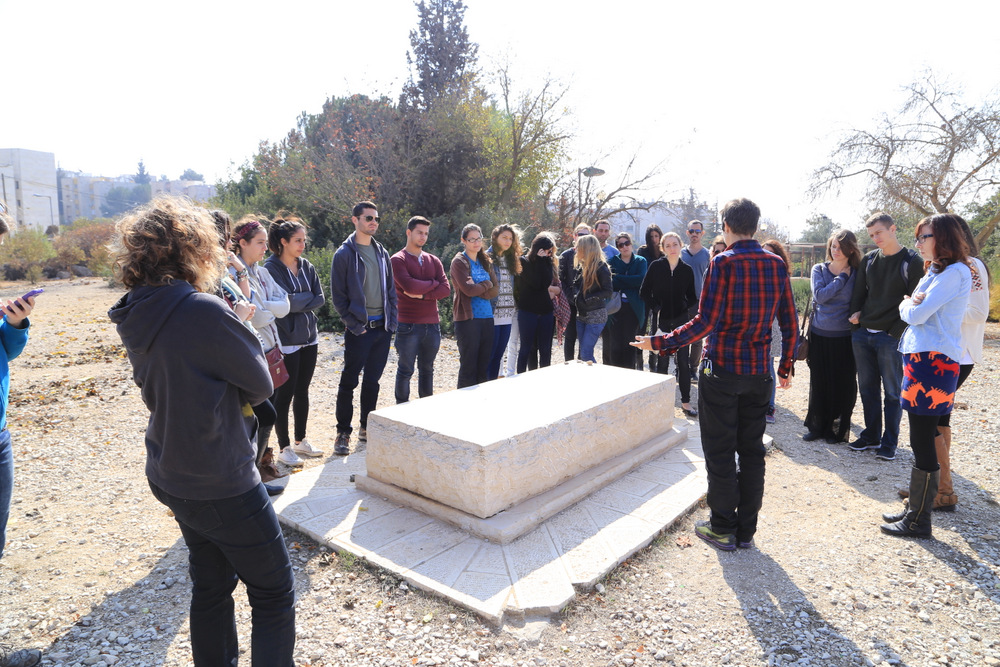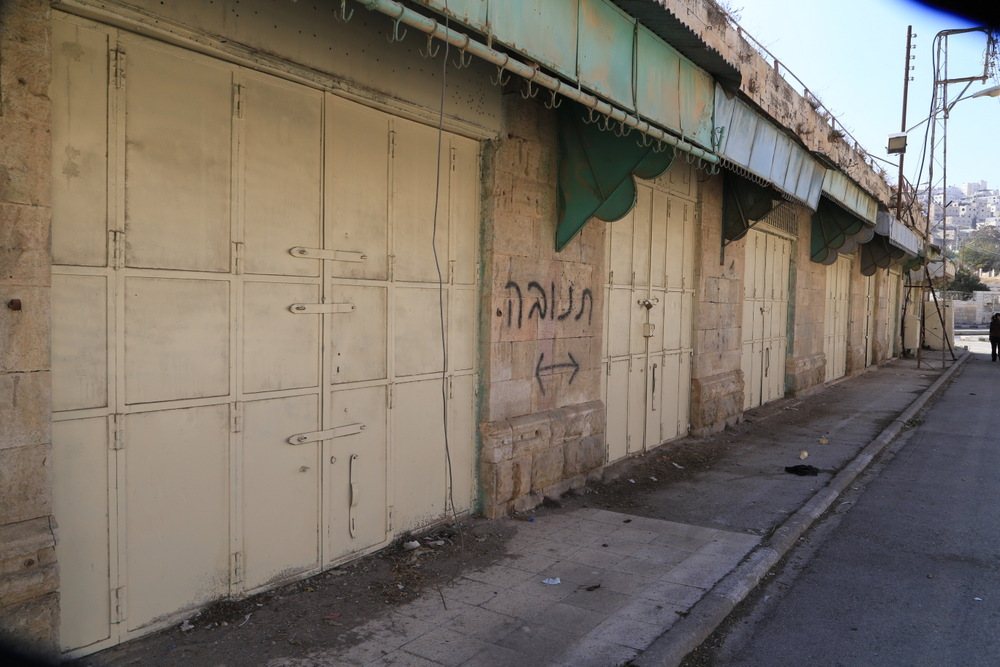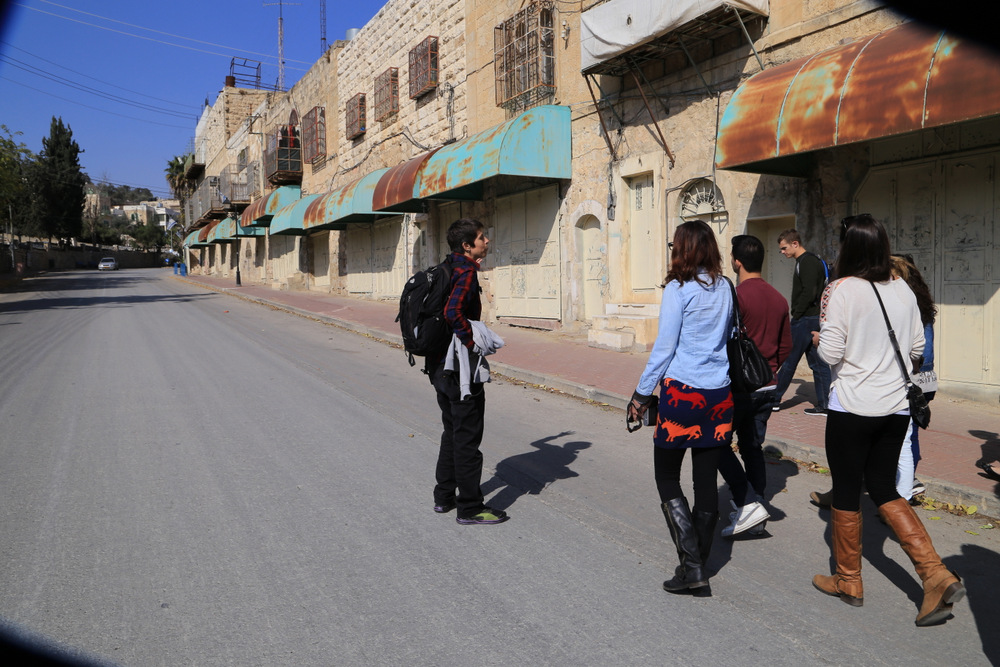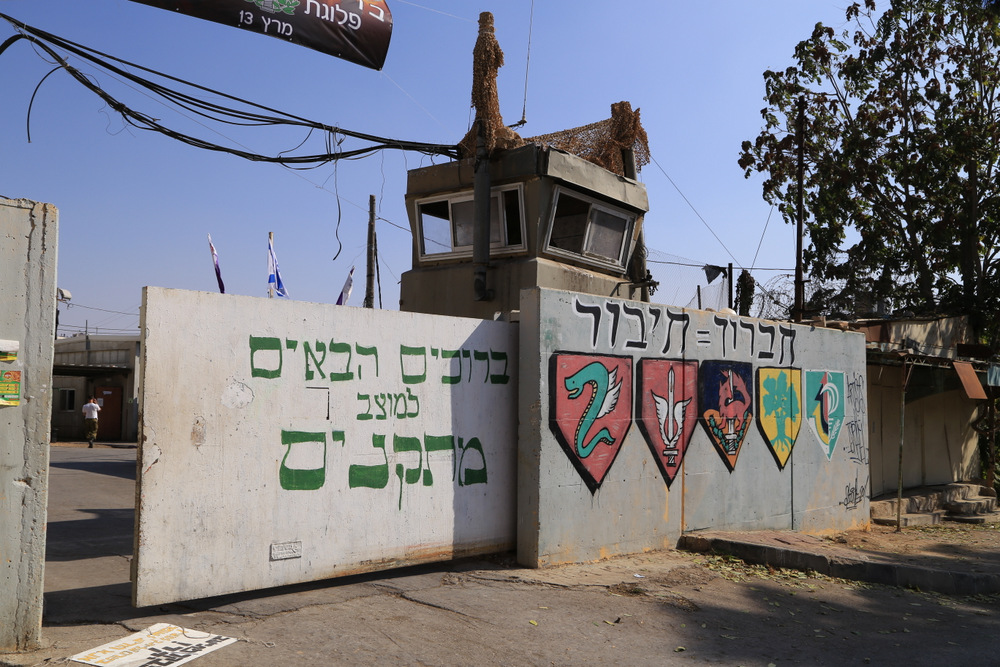Over the past decade downtown Hebron has become a ghost town. Israel has enacted a strict segregationist policy there, enforced by imposing stringent restrictions on Palestinian pedestrians and vehicles, closing shops and businesses, and not safeguarding Palestinians from settler violence. As a result, many residents have left their homes and entire neighborhoods located near homes of Israeli settlers are entirely deserted. Hebron’s markets and main streets have grown desolate. Those individuals who have not left downtown Hebron are among the weakest and most marginalized members of society. With no option of moving away, they regularly encounter both an increased and more violent presence of Israeli security forces as well as settler violence. Finally, they must face their isolation from the rest of the city of Hebron.
We took a group of American Young Judeans on a tour of downtown Hebron. This was the first time most of them had been to downtown Hebron.
Sharon Azran, a photographer and a B’Tselem staff member, joined the tour. Below are some of her photos:











